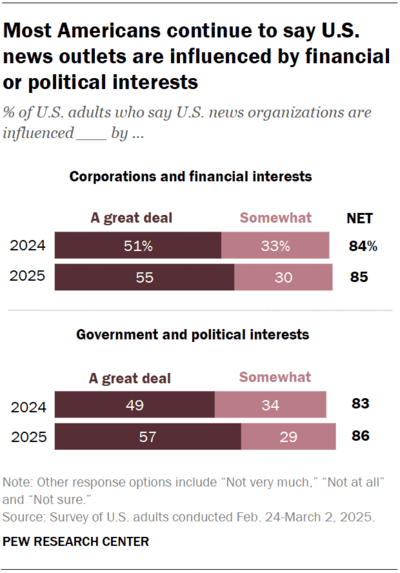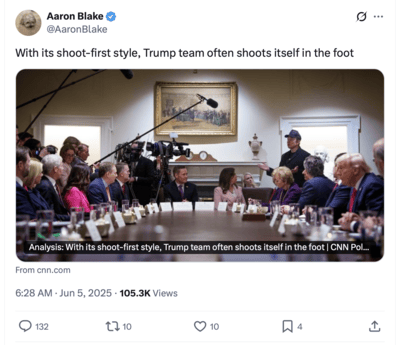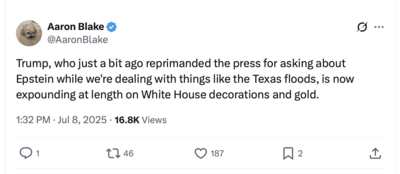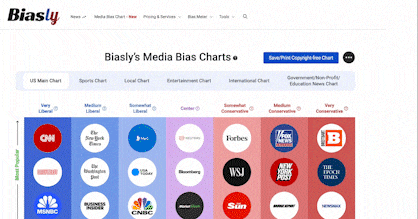In today’s world, media bias is everywhere. Many people and organizations, like us, are making efforts to tackle this issue. As the people responsible for producing our news, where do journalists come into play? Journalists have standards for their work that they can choose to obey or ignore. When journalists disregard these ethical principles, the product is unethical journalism. Unethical journalism can quickly lead to unreliable, biased news. Looking at how these unethical practices manifest as bias in journalism can help us identify what is credible and what’s not. Let’s explore what journalism is supposed to look like, how it gets sidetracked, and what we can do next.
Basics of Ethical Journalism
Ethical journalism is a reporting practice that sticks to a moral code. This code revolves around the idea of reducing harm towards subjects, sources, and the general public. The Ethical Journalism Network (EJN) lays out 5 core principles of ethical journalism:
- Truth and accuracy
- Independence, or not working on behalf of outside interests
- Fairness and impartiality
- Humanity, or having an awareness of the impact of your journalism on others
- Accountability for mistakes
The Society of Professional Journalists (SPJ) expands on these principles in its code of ethics. The SPJ encourages platforming multiple points of view on an issue, thoroughly vetting and using reliable sources, and avoiding oversimplification or distortion of a situation. The SPJ advises journalists against favoring special interests like donors and sponsors. They also discourage allowing political inclinations to impair the credibility of their work.
So why is ethical journalism important? A large portion of ethical reporting centers on critically analyzing journalism and bias within it. These recommendations from the SPJ and EJN are instrumental in helping reduce bias in the news. In a statement from the SPJ in 2025, the organization clarified that “ethical journalism is not a political act; it is a public service.” When journalists disregard ethical practices, there are resounding repercussions. Facts and sources go unreviewed. Contexts and issues are twisted and misrepresented. Personal motives infect journalists’ work.
This may be intentional, or it could be by total accident. However it happens, we can’t always depend on journalists to produce reliable content. Then, it falls to the reader to know the signs and understand the consequences of unethical journalism.
How Unethical Journalism Contributes to Media Bias
Where news reporting fails to adhere to those standards, media bias runs rampant. This happens in many ways. Let’s take a look at examples of unethical behavior in journalism to better understand why biased media is so common.
Financial Incentives
Unfortunately, it is not rare to see financial incentives take precedence over fair reporting. Attention attracts money, which keeps outlets and journalists in business. Getting the maximum amount of attention then becomes the goal, not creating unbiased media.
Clickbait
This pressure to generate revenue can result in clickbait. This is the practice of creating eye-catching content solely designed to get viewers to interact with it. Clickbait is a tactic used all over the world, from the European Union to Malaysia to Sub-Saharan Africa. Journalists often use clickbait at the expense of truth and accuracy. Those who create clickbait tend to use misinformation and sensationalism to gain viewership.
Misinformation happens when journalists fabricate or misrepresent the issue at hand. This is why fake news and unethical journalism have a close relationship. The U.S. Public Interest Research Group wrote in an article on misinformation that “in the race between the ‘false but interesting’ and ‘true but boring’, the interesting story wins.”
This is where sensationalism comes into play, too. Sensationalism is a reporting method that prioritizes shock value and emotionally-charged language. In the report on the European Union, researchers observed how newspapers garnered attention. They found that in nearly half of the cases they examined, newspapers got clicks “not through quality content but rather, […] through catchy, provocative and sensationalist front-page headlines.” Sensationalism and news bias can be particularly dangerous during times of panic. Journalists have used startling language to characterize both the COVID-19 pandemic and the climate crisis. One study found that sensationalist techniques are able to capture readers’ attention in order to sway their beliefs.
An example of both misinformation and sensationalism is in a headline from InfoWars. Alex Jones runs this news site, known for its dubious credibility. InfoWars posted this headline and byline in July of 2025:

Source: InfoWars
Despite what the headline and byline suggest, there is no evidence to suggest that Democrats are trying to wage war on other Americans. Additionally, the people arrested in connection with this ambush have not yet been reported to be Antifa members. This is entirely an assumption Jones makes. These aspects of the reporting are blatantly misinformative. Sensationalism is evident in the phrases “terror alert” and “terrorist cell,” and even in the three exclamation points. These are features a journalist used to provoke fear and urgency in readers to move them to engage with the content. Luckily, knowing these signs in tandem with using a reliability checker can help prevent us from falling into these misleading traps!
Bribes
Perhaps less common, but still worth mentioning, are bribes. Occasionally, the financial incentives journalists have to abandon ethical principles come in the form of tangible quid pro quos. In Nigeria, journalists face ethical dilemmas with the brown envelope system. This is the practice of accepting money or gifts from people to write or ignore certain stories. A study on journalism in Kuwait observed a similar phenomenon.
Where journalists emphasize monetary gains, whether through clickbait or bribes, journalist bias grows. When this bias is left unchecked, credibility is lost.
Outside Influences
Other people and influences can affect journalistic integrity, especially when these actors are in a position of power over the journalist. The main examples of this are media owners and their corporate and political alliances. This kind of unethical behavior in journalism has not gone unnoticed. The Pew Research Center determined that a large majority of Americans believe that financial and political interests influence the news.

Source: Pew Research Center
Research done in Lithuania observed that factors limiting journalist autonomy include the economic and business interests of media owners. This makes sense, given that owners and presidents often have to appease their sponsors to keep funding. Media owners who are beholden to donors and investors may stifle journalistic discretion if those actors wish.
In Indonesia and the United States, media owners’ political standings may also put pressure on journalists to behave unethically. A study on the 2024 Indonesian presidential race compared outlets that endorsed a candidate to those that did not. The study found that the outlets that did not make an endorsement reported neutrally on the election. However, the two main outlets that endorsed opposing candidates became vehicles for propaganda. Journalists recounted that media owners forced them to produce wildly biased content. Sometimes, a candidate who is presented too positively or too negatively can be an indicator of media bias. Analyzing politicians’ portrayals can be very telling of journalistic bias.
In the United States, the Sinclair Broadcasting Group owns more than 150 local news stations. The Washington Post noted that Sinclair has “a long history of favoring conservative causes and candidates.” Concerns about Sinclair’s ownership flared when they required all its stations to read the same script about fake news. Journalists had to give up their ethical responsibilities to meet the demands of media owners. Using a tool like a media bias chart can give you an idea of a media company’s wider pattern of political bias. This can help you make more informed decisions about the presence of unethical journalism.
Personal Political Beliefs
Not all bias in the news comes from media owners bearing down on journalists. Journalists can lose sight of their ethical responsibilities all on their own. The most obvious unethical journalism examples often deal with personal political beliefs. Since we all have biases, it can be easy to let our political stances seep into our work.
The most surefire ways to catch journalists’ political biases are to consult journalist bias analytics and examine their reporting history. Take CNN Senior Reporter Aaron Blake, for example. Our rating puts Blake at -51% Medium Left. How can you tell?
First, you can take a look at some of the posts he has made on his social media. Several of Blake’s posts from X demonstrate a negative view of President Donald Trump’s administration:

Source: Aaron Blake on X

Source: Aaron Blake on X
These beliefs seem to carry over into some of Blake’s work. Articles written by Blake in the summer of 2025 about Republicans in the government are overwhelmingly negative. As demonstrated in the headlines below, Blake describes Republican moves as “botched,” “backfiring,” and “baseless.”

Source: CNN

Source: CNN

Source: CNN
Even when working at the Washington Post, Blake characterized the Trump administration as “sloppy” and “dismal.”
These are profoundly negative framings of Trump and the GOP. These charged, possibly sensationalist, words inject a right-opposed viewpoint in opposition into Blake’s reports. These pieces of journalism come out largely looking like left-biased pieces of media. Based on his activity on X, this could stem from his personal political perspective. While calling Blake an unethical journalist may be too far, his reporting demonstrates how a journalist might let their political stance skew the news.
These examples may appear to be trivial one-offs. However, if every journalist abandons standards of neutrality, reliable news would cease to exist. It would be very difficult for the public to find credible sources of information that they can use to independently form an opinion. This hope, that everyone can make decisions for themselves, is critical to a free society. It would be hard to actualize this hope if readers are being influenced by biased reporting at every turn.
Social Prejudices
Sometimes a journalist’s social prejudices can affect the way they report things. These cases of unethical journalism may result in biased news, no matter how well-intentioned the journalist was. Many different kinds of prejudices can have an impact.. Two quite common and well-studied forms of social biases are racism and sexism.
In 2020, following the murder of George Floyd, a Black man named Philip Mbuji Johansen was murdered in Denmark. Johansen’s autopsy showed that he was killed in a manner similar to Floyd. The suspect in the killing, a White man, had a history of using anti-black slogans and sported swastika tattoos. An examination of the coverage of this story found that several journalists focused their coverage on the rights of the suspect instead of the motivations for the crime. They emphasized the cruelty of labelling someone as racist, instead of the cruelty itself. The researchers write that the “charge of racism” was “presented as a severe attack that almost seems to eclipse the crime of manslaughter.”
The seminal book Racism in the Press by Van Dijk points out that subtle wording is used to avoid discussing racism. Journalists, implicitly or explicitly, tended to steer away from speaking about race outright. Instead, they used words like “under-privileged” and “disadvantaged” as euphemistic ways of talking about non-White people.
Gender bias colors the reporting of important topics, too. Following the #MeToo movement, women who were victims of sexual assault shared their stories in droves. This was a large and ongoing story that the press covered frequently. However, the details some journalists in South Korea emphasized revealed a disturbing trend. Women who were victims of sex crimes were consistently objectified using sensationalist language. Unnecessary images of women’s positioning were included. Messaging about the passivity of the victims was also poignant, especially considering that passivity is a trait associated with stereotypes about women.
This kind of media bias extends to politicians, too. In the early 2000s, Huffpost posted articles with these two headlines about Sarah Palin:
![]()
Source: Huffpost
![]()
Source: Huffpost
Reporting on the attractiveness of an Alaskan governor is evidence of a wider problem. Journalists may buy into the idea that female politicians’ appearances are just as, if not more, important than their careers and policy stances. This is consistent with sexist beliefs about where women’s value lies.
What reporters select and emphasize in their work can betray unethical practices in journalism. When journalists allow their prejudices to go unchecked, it changes the landscape of our news. Focusing on irrelevant sexist details or obscuring hate crime biases the media in ways that may affect our beliefs.
What Now?
We’ve identified manifestations of unprofessional and unethical journalism. We now know how damaging it can be to our news cycle. How is anyone supposed to tackle this big of a problem? There are a handful of both industry solutions and individual actions that show promise.
Industry Solutions
There are many diverse approaches to curbing journalistic bias within the news industry. In a 2025 study, journalist Atifa Anjuman Aktari points to promoting media literacy education as a potential solution. Aktari writes,
“The development of awareness about media bias mechanisms combined with narrative-critical thinking practice enables people to recognize biased material so they can handle media information correctly.”
Aktari adds that there needs to be an increase in transparency surrounding media ownership. If the public is aware of the financial relationships media outlets have and their owners’ stakes, they will be more equipped to understand the pressures journalists have to produce specific kinds of content.
Other studies examine creating a technology-based framework for reducing journalistic and media bias. One such paper developed a tool that journalists can use that encourages multi-faceted reporting that represents many voices on a topic.
Individual Actions
These are great steps towards reducing the frequency of unethical journalism. Of course, these are hard things for individual people to put into action. Luckily, there are a few actions we can take individually to minimize the damage from unethical journalists.
If you, yourself, are a journalist, it may be beneficial to request a bias rating for your work in order to catch your blind spots. This can help keep you accountable to your commitment to unbiased journalism!
Those who are readers may be wondering how to report unethical journalism. First, if you see an egregiously, intentionally misinformative piece of journalism, you can report it to the Federal Communications Commission (FCC). However, the FCC can only intervene in extreme cases. So, more often than not, it’s better to take these complaints directly to the source. If you take issue with the journalistic practices you witness, reach out to the journalist or the outlet. Media outlets almost always provide a way for you to reach out, and usually, individual journalists do as well. If this effort isn’t successful, you could take the problem public. You can respectfully post about the incident on social media and tag the responsible parties. We would also encourage you to report troubling news here, to warn other readers.
At the bare minimum, we all deserve news that is ethically and mindfully produced. It is not too much to ask for!
As we learned, unethical journalism contributes to media bias in all sorts of sneaky ways. Most journalists try to do good work. But if we assume that every reporter has our best interests at heart, we might find shoddy journalism unexpectedly influencing our beliefs.
You can also make an effort to catch journalistic issues in the moment. Here is a quick mental checklist to run through after you read an article:
- Is the journalist reporting information that has been fact-checked and corroborated?
- Are their sources reliable? Are their experts qualified and neutral?
- Do you know where this outlet falls politically?
- Did the journalist disclose that they or their outlet has a vested interest in this topic? If not, do you have good evidence to indicate that they do, anyway?
- Is the journalist presenting and/or acknowledging multiple sides of the issue?
- Is the journalist using objective and fair language, or are they using emotionally-charged language?
- Does this journalist have past work or a public presence that strongly favors a viewpoint or a candidate?
You can outsource some help, too! Biasly has a Chrome extension that helps you look for media bias in the news. Once you install the extension, you should see the Biasly icon when you pull up an article to read. Just click on it, and Biasly’s AI-powered Bias Meter will immediately generate a report.
It’s a delicate balance. Journalists must listen to audience feedback and preferences, but maintain objectivity and accuracy. Readers trust and rely on the integrity of journalists, but not so much that they can’t critically form their own opinions. To this end, journalists and readers are meant to work as a team. We keep each other in check. Combatting media bias is a group effort, and it’s a responsibility worth sharing!























